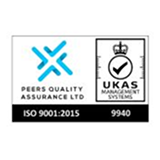5 symptoms of legacy FIDS you’ve learned to tolerate

It’s 6 a.m. and your first wave of departures is taking off. Gate A12’s display screens are still showing yesterday’s information. Again. You’re starting the day behind schedule, passengers are already confused, and your team has answered the same question a dozen times before every screen is finally updated.
Sound familiar?
Too many airports are still running on Flight Information Display Systems that were cutting-edge ten years ago. They keep the lights on, but behind the scenes they’re quietly draining resources, frustrating passengers, and limiting your airport’s potential.
The problem isn’t that these systems are broken. It’s that they’re falling behind while modern alternatives are transforming how airports communicate and operate.
Here are five signs your FIDS might be holding you back and why it’s time to expect more.
1. Your staff spends hours on manual updates every week
The symptom: Your team manually updates flight information across multiple systems and displays throughout the day. Gate changes require individual screen updates, weather delays mean rushing to terminals with new information, and emergency communications become a frantic exercise in updating dozens of separate displays.
Why you’ve tolerated it: It’s “just part of the job,” and your experienced staff has developed efficient workarounds over the years.
The real cost: Manually updating FIDS screens consume 60+ hours per month of valuable staff time. That’s time your team could spend on passenger assistance or critical airport operations. More importantly, manual processes introduce human error and delays that directly impact passenger experience and causes confusion amongst passengers.
AeroCloud FIDS auto-updates flight, gate and even baggage information directly from operational data sources, always delivering accurate information and eliminating manual updates entirely. When your staff isn’t constantly chasing updates, they can focus on what matters most; ensuring that your airport operations are running smoothly.
2. Display inconsistencies create passenger confusion daily
The symptom: Passengers approach your information desk asking why the display near Gate 12 shows different information than the one near baggage claim. Flight information varies across screens, creating confusion and requiring staff intervention to clarify conflicting data.
Why you’ve tolerated it: You’ve assigned staff members to answer these questions, and passengers eventually figure things out.
The real cost: Sharing FIDS database information in a time-critical and accurate way is crucial to guiding passenger journeys from bag-drop to their flight. Inconsistent information doesn’t just confuse passengers, it ultimately impacts their confidence in your airport’s competency and reduces the likelihood of them rebooking flights through your airport.
Research shows that AeroCloud FIDS create a smoother, seamless journey for passengers, with airports seeing a 90% reduction in passenger complaints. This eliminates unnecessary crowding at gates and information desks and reduces stress on your customer service team.
3. Emergency communications still feel like an emergency for your operations team
The symptom: When you need to broadcast urgent information, whether it’s severe weather delays, security alerts, or gate changes, it requires multiple team members, several phone calls, and precious minutes to update all displays across your terminal.
Why you’ve tolerated it: Emergency situations are inherently stressful, and your team has protocols in place to handle communications as quickly as possible.
The real cost: In emergency situations, every minute matters. Delayed or incomplete emergency communications can impact passenger safety, create bottlenecks, and damage your airport’s reputation. During critical moments, your legacy system becomes a liability rather than an asset.
Modern flight information display systems like AeroCloud FIDS allow you to push emergency messages, last-minute changes, and critical communications instantly to all connected displays from a single interface. This capability isn’t just convenient; it’s essential for maintaining operational safety and passenger confidence.
4. Your display hardware costs keep climbing
The symptom: Legacy display hardware requires specialist maintenance contracts, expensive replacement parts, and dedicated IT support. Every hardware failure means downtime and emergency repair costs that strain your operational budget.
Why you’ve tolerated it: This is simply the cost of running airport display systems, and you’ve budgeted for these ongoing expenses.
The real cost: Legacy hardware locks you into expensive vendor relationships with limited flexibility. Your budget continues growing while your FIDS capabilities remain static.
AeroCloud FIDS run on standard commercial displays using wifi-enabled boxes that connect to any HDMI screen, while you manage content via our cloud-based interface. This approach saves money on dedicated hardware while providing greater flexibility and easier maintenance.
5. Revenue opportunities slip away while passengers wait in confusion
The symptom: Passengers cluster around information display screens trying to interpret outdated information, spending their pre-flight time working out their flight, gate and ramp details rather than exploring your terminal’s retail facilities.
Why you’ve tolerated it: Passengers eventually find their gates, and your retail partners understand that airport foot traffic patterns can be unpredictable.
The real cost: When your FIDS create confusion instead of clarity, passengers spend valuable time looking for the correct information rather than shopping, dining, or relaxing in your terminal.
Clear, accurate flight information displays give passengers confidence to explore your terminal. AeroCloud FIDS keeps passengers in-the-know with real-time scheduled information, local weather updates, news and custom content. Real-time flight updates boost revenue by giving passengers more time to shop and dine when they trust that they’ll receive timely notifications about flight, gate, baggage and even ramp information.
Your Airport Deserves Better FIDS
Far from being minor inconveniences these five symptoms reveal deeper inefficiencies that prevent your airport from running operations smoothly. While your airport has learned to work around these limitations, your passengers haven’t learned to ignore them.
Modern airports are choosing AeroCloud’s cloud-native FIDS solution:
- Real-time synchronization across all displays and mobile devices
- Automatically updates data directly from the AeroCloud platform
- Instant emergency communications across your entire terminal network
- Cost-effective hardware using any commercial HDMI displays
- Enhanced passenger experience that drives terminal revenue
The question isn’t whether your legacy FIDS is working, it’s whether it’s working hard enough for your airport’s success.
Ready to upgrade your FIDS?
AeroCloud’s Flight Information Display System transforms airport communication from a daily challenge into a competitive advantage. With 24/7 automatic updates, 90% fewer passenger information complaints, and 60 hours saved monthly through elimination of manual processes, AeroCloud FIDS delivers immediate operational improvements.
Don’t let legacy limitations define your airport. Discover how AeroCloud FIDS can revolutionize your airport’s passenger experience and operational efficiency.
Contact our team today to book an AeroCloud FIDS demo.
See how PSP use AeroCloud FIDS to update their terminal screens in real-time with live, accurate data.
With AeroCloud FIDS, Palm Springs International Airport can:
- Display accurate, live flight, gate, and baggage information across all screens and devices
- Push emergency alerts and branded messages instantly
- Manage displays remotely from any smartphone or tablet
- Reduce manual updates and keep passengers informed with ease










 4th November 2025
4th November 2025 







